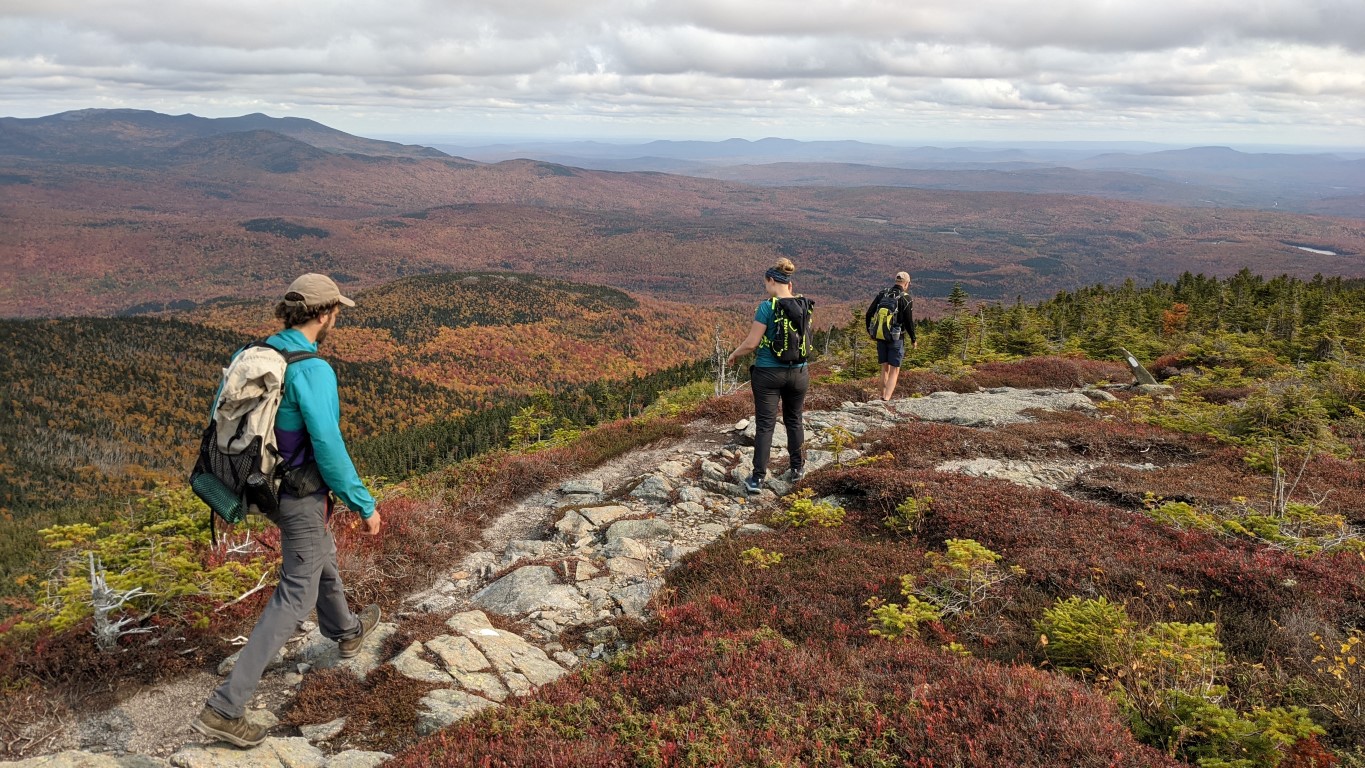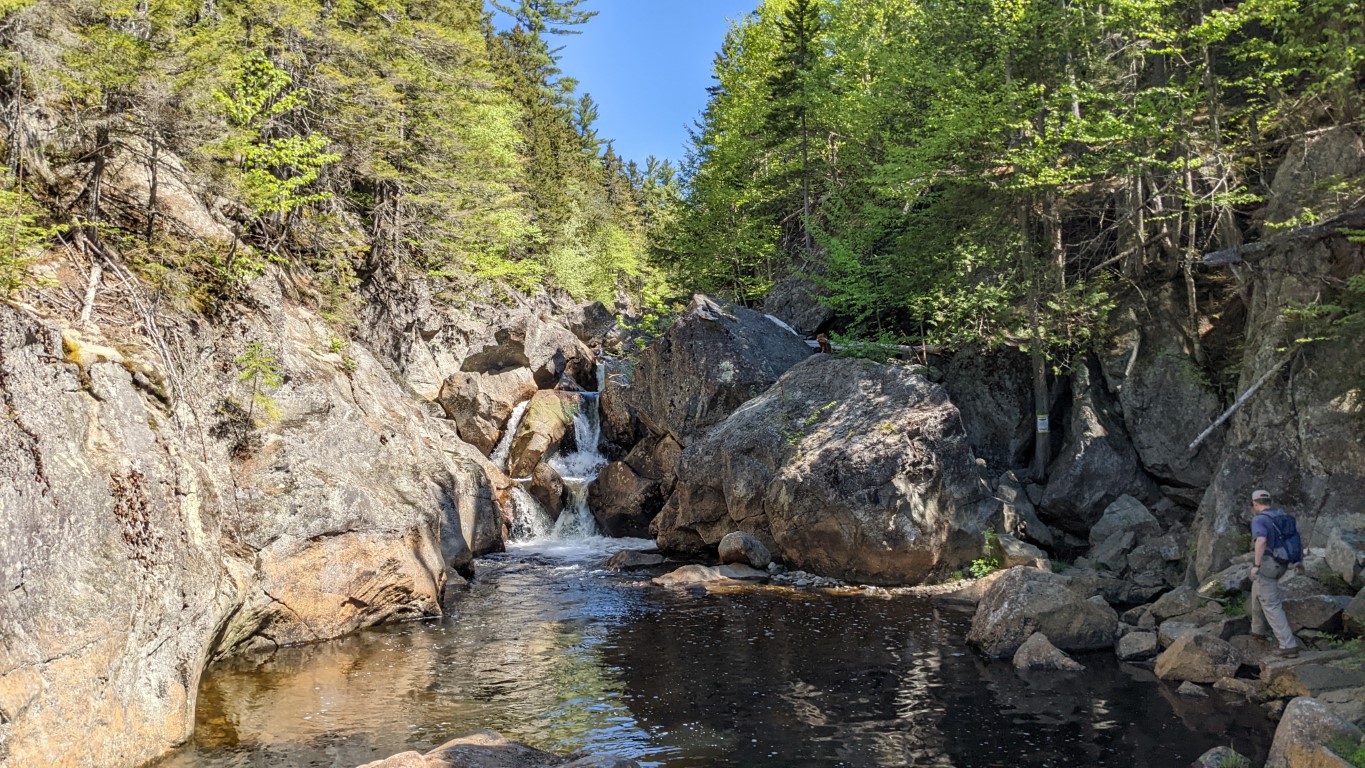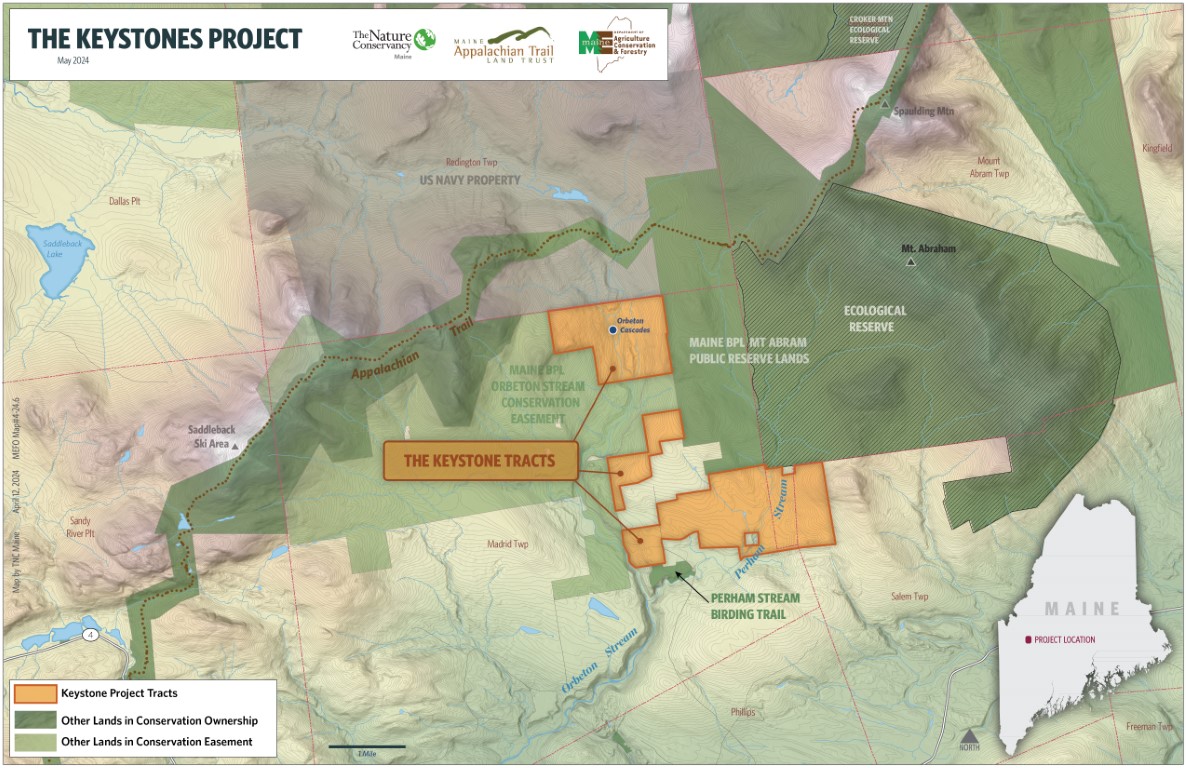Over 2,700 Acres of Critical Wildlife Habitat Protected in Maine’s High Peaks Region
Conservation partners and the State of Maine collaborate to conserve important “Keystones” connections between Mount Abraham and Saddleback
The Maine Appalachian Trail Land Trust (MATLT), The Nature Conservancy (TNC) in Maine, and the Department of Agriculture, Conservation and Forestry’s (DACF) Maine Bureau of Parks and Lands (BPL) announced today that 2,706 acres have been added to the Mount Abraham Public Reserve Land managed by the State of Maine. Created through the acquisition of multiple properties, the “Keystones project” holds the larger landscape together, playing a critical role in preventing development and fragmentation while ensuring public access.
In the valley between Saddleback and Mount Abraham, the Keystones parcels form the lynchpin in a landscape that has been gradually conserved over two decades. Protection of these properties builds on recent conservation successes and contributes to a contiguous landscape of over 100,000 acres that are permanently conserved and that play important roles in supporting outdoor recreation, connected wildlife habitats that allow species to move across the landscape, timber harvest, mature forest, and carbon sequestration and storage.
The project partners coordinated with seven different landowners to protect 21 separate parcels over the last three years. The addition of these lands to Maine’s Public Reserve system connects a 5,000-acre conservation easement held by BPL, the Mount Abraham Public Reserved Lands managed by BPL, the Appalachian Trail Corridor, and the Perham Stream Birding Trail property owned by the High Peaks Alliance. The project came together thanks to strong partnerships between the conservation partners and support from the Land for Maine’s Future program.
These lands are part of the traditional territory and are of ongoing cultural significance to the Wabanaki People. They include four and a half miles of frontage on Orbeton and Perham Streams, which are listed as Wild Brook Trout Priority Areas by the Maine Department of Inland Fisheries and Wildlife. The streams join each other before meeting with the upper Sandy River, a tributary to the Kennebec River that is widely considered to be the top priority in Maine for endangered Atlantic salmon recovery.
The Keystones project creates better road access to the Mount Abraham Public Reserve Lands, opportunities for new access points along Perham and Orbeton Streams for fishing, swimming, and hand-carry boat use, a trail connection to Orbeton Cascades – a series of gorgeous waterfalls – and permanent access for hunting and other recreational activities. It also protects local ATV trails, almost five miles of Snowmobile Trail ITS-84, and the viewshed along the Appalachian Trail, located less than a half mile to the north.
“The Keystones project is a testament to what we can achieve through collaboration and dedication to conservation,” said Amanda Beal, DACF Commissioner. “It reflects our shared commitment to preserving critical wildlife habitats and ensuring public access for recreation while maintaining the ecological integrity and beauty of the High Peaks region for generations to come. Furthermore, it moves us closer to the important conservation goals articulated in Maine’s climate action plan.”
“Completing the Keystones project marks an important milestone in our enduring efforts to safeguard Maine’s natural heritage and longstanding tradition of public access,” said Bill Patterson, Deputy Director of the BPL. “These protected lands preserve critical wildlife habitats and ensure public access to outdoor recreation, further enriching the lives of Mainers and our visitors. We sincerely thank all the partners, donors, and landowners whose dedication and collaboration have made this achievement possible.”
“The Maine Appalachian Trail Land Trust is very pleased to see this project completed after years of effort,” said Simon Rucker, Executive Director of the Maine Appalachian Trail Land Trust. “The lands along the A.T. in Maine play a critical ecological role, are important for outdoor recreation, and provide a wealth of community benefits. Thank you to partners, donors, and the landowners for making the Keystones project a reality.”
“This conservation effort was a model of conservation collaboration and we’re so grateful to our partners for an amazing outcome,” said Kate Dempsey, State Director of The Nature Conservancy in Maine. “This conservation of the Keystones is a critical step in maintaining biodiversity and a climate-resilient landscape in our region as we adapt to the changes we’re already experiencing in Maine, as well as those yet to come.”
This project was supported by funds from the Land for Maine’s Future program, grants from The Nature Conservancy in Maine, Maine Appalachian Trail Land Trust, Maine Mountain Collaborative, Davis Conservation Foundation, component funds at Maine Community Foundation, the John Sage Foundation, the Fields Pond Foundation, L.L. Bean, and The Betterment Fund, and private donations.



